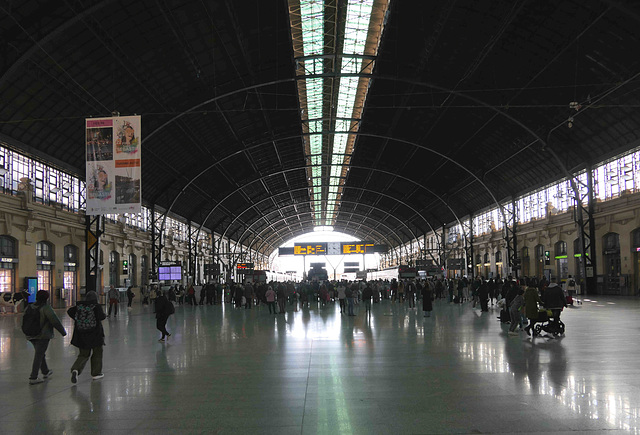Valencia - Plaza de Toros
Valencia - Catedral de Santa María
Valencia - Catedral de Santa María
Valencia - Catedral de Santa María
Valencia - Catedral de Santa María
Valencia - Catedral de Santa María
Valencia - Catedral de Santa María
Valencia - Catedral de Santa María
Valencia - Catedral de Santa María
Valencia - Catedral de Santa María
Valencia - Catedral de Santa María
Valencia - Catedral de Santa María
Valencia - Catedral de Santa María
Valencia - Catedral de Santa María
Valencia - Catedral de Santa María
Valencia - Catedral de Santa María
Valencia - Catedral de Santa María
Valencia - Catedral de Santa María
Valencia - Palacio del Marqués de Dos Aguas
Valencia - Ciudad de las Artes y las Ciencias
Valencia - Ciudad de las Artes y las Ciencias
Valencia - Ciudad de las Artes y las Ciencias
Valencia - Lookout
Valencia - Estacion del Norte
Valencia - Estacion del Norte
Valencia - Estacion del Norte
Valencia - Estacion del Norte
Valencia - Estacion del Norte
Valencia - Plaza del Ayuntamiento
Valencia - Plaza del Ayuntamiento
Valencia - Plaza del Ayuntamiento
Valencia - Plaza del Ayuntamiento
Valencia - Plaza del Ayuntamiento
Valencia - Plaza del Ayuntamiento
Valencia - Plaza del Ayuntamiento
Valencia - Centre del Carme
Valencia - Centre del Carme
Valencia - Centre del Carme
Valencia - Iglesia de los Santos Juanes
Valencia - Mercado Central
Valencia - Mercado Central
Valencia - Mercado Central
Valencia - Mercado Central
Valencia - Mercado Central
Valencia - Mercado Central
Location
Keywords
Authorizations, license
-
Visible by: Everyone -
All rights reserved
-
19 visits
Valencia - Estacion del Norte


According to the Roman historian Titus Livius "Valentia" was founded by Consul Decimus Iunius Brutus Callaicus in the 4th century BC,
A century later "Valentia Edetanorum" became one of the first Hispanic cities to become a Roman colony.
The city made rapid progress after the Arab conquest in 711, reaching 15,000 inhabitants in the Caliphate of Córdoba. The Amirids and the Dhun Nunids ruled in “Balansiya”. In 1094, El Cid, a Castilian noble, conquered the city. The conquest was not carried out on behalf of one of the Christian kingdoms, but on the Cid's own account, who proclaimed himself "Señor de Valencia" and thus created a kind of private kingdom. He was able to defend the city against several Almoravid attacks, and after his death in 1099, his widow Jimena managed to hold Valencia until 1102, when it fell to the Almoravids, and a little later to the Almohads.
After the victory of the united Christian armies over the Almohads in the Battle of Las Navas de Tolosa (1212), Moorish Spain fell apart again into individual small kingdoms, including a Taifa from Valencia.
It was finally conquered in 1238 by Jaime I de Aragón (aka "el Conquistador"), after a five-month siege.
In the 15th century, the city grew rapidly and developed into one of the largest Mediterranean ports and an important trade and financial center. At the beginning of the 15th century the city had around 40,000.
The North Station is in the city center. The station was opened as a terminal station in 1917 after eleven years of construction. The building is one of the main works of Valencian Art Nouveau and was declared a heritage site in 1987.
A century later "Valentia Edetanorum" became one of the first Hispanic cities to become a Roman colony.
The city made rapid progress after the Arab conquest in 711, reaching 15,000 inhabitants in the Caliphate of Córdoba. The Amirids and the Dhun Nunids ruled in “Balansiya”. In 1094, El Cid, a Castilian noble, conquered the city. The conquest was not carried out on behalf of one of the Christian kingdoms, but on the Cid's own account, who proclaimed himself "Señor de Valencia" and thus created a kind of private kingdom. He was able to defend the city against several Almoravid attacks, and after his death in 1099, his widow Jimena managed to hold Valencia until 1102, when it fell to the Almoravids, and a little later to the Almohads.
After the victory of the united Christian armies over the Almohads in the Battle of Las Navas de Tolosa (1212), Moorish Spain fell apart again into individual small kingdoms, including a Taifa from Valencia.
It was finally conquered in 1238 by Jaime I de Aragón (aka "el Conquistador"), after a five-month siege.
In the 15th century, the city grew rapidly and developed into one of the largest Mediterranean ports and an important trade and financial center. At the beginning of the 15th century the city had around 40,000.
The North Station is in the city center. The station was opened as a terminal station in 1917 after eleven years of construction. The building is one of the main works of Valencian Art Nouveau and was declared a heritage site in 1987.
- Keyboard shortcuts:
Jump to top
RSS feed- Latest comments - Subscribe to the comment feeds of this photo
- ipernity © 2007-2024
- Help & Contact
|
Club news
|
About ipernity
|
History |
ipernity Club & Prices |
Guide of good conduct
Donate | Group guidelines | Privacy policy | Terms of use | Statutes | In memoria -
Facebook
Twitter

Sign-in to write a comment.